使用 PYTORCH 进行图像风格迁移
一、介绍
本教程介绍如何实现 由 Leon A. Gatys、Alexander S. Ecker 和 Matthias Bethge 开发的神经风格算法。神经风格或神经传输允许您拍摄图像并以新的艺术风格再现它。该算法采用三幅图像,即输入图像、内容图像和风格图像,并将输入更改为类似于内容图像的内容和风格图像的艺术风格。

二、基本原则
原理很简单:我们定义两个距离,一个距离为内容 () 和一个用于样式 (
)。
测量两个图像之间内容的差异程度
衡量两个图像之间的风格差异程度。然后,我们获取第三个图像(输入),并对其进行转换,以最小化其与内容图像的内容距离以及与样式图像的样式距离。现在我们可以导入必要的包并开始神经传输。
三、导入包并选择设备
以下是实现神经传输所需的软件包列表。
-
torch,torch.nn,numpy(PyTorch 神经网络不可或缺的软件包) -
torch.optim(高效梯度下降) -
PIL,PIL.Image,matplotlib.pyplot(加载并显示图像) -
torchvision.transforms(将PIL图像转换为张量) -
torchvision.models(训练或加载预训练模型) -
copy(深度复制模型;系统包)
import torch
import torch.nn as nn
import torch.nn.functional as F
import torch.optim as optimfrom PIL import Image
import matplotlib.pyplot as pltimport torchvision.transforms as transforms
import torchvision.models as modelsimport copy
接下来,我们需要选择运行网络的设备并导入内容和样式图像。在大图像上运行神经传输算法需要更长的时间,并且在 GPU 上运行时速度会快得多。我们可以用来torch.cuda.is_available()检测是否有可用的 GPU。接下来,我们设置torch.device在整个教程中使用的 。该方法还.to(device) 用于将张量或模块移动到所需的设备。
device = torch.device("cuda" if torch.cuda.is_available() else "cpu")
torch.set_default_device(device)
四、加载图像
现在我们将导入样式和内容图像。原始 PIL 图像的值在 0 到 255 之间,但当转换为 torch 张量时,它们的值将转换为 0 到 1 之间。图像还需要调整大小以具有相同的尺寸。需要注意的一个重要细节是,torch 库中的神经网络是使用 0 到 1 范围内的张量值进行训练的。如果您尝试向网络提供 0 到 255 个张量图像,那么激活的特征图将无法感知预期的特征内容和风格。然而,Caffe 库中的预训练网络是使用 0 到 255 个张量图像进行训练的。
注意
以下是下载运行本教程所需图像的链接: picasso.jpg和 dance.jpg。images下载这两个图像并将它们添加到当前工作目录中的同名目录中。
# desired size of the output image
imsize = 512 if torch.cuda.is_available() else 128 # use small size if no GPUloader = transforms.Compose([transforms.Resize(imsize), # scale imported imagetransforms.ToTensor()]) # transform it into a torch tensordef image_loader(image_name):image = Image.open(image_name)# fake batch dimension required to fit network's input dimensionsimage = loader(image).unsqueeze(0)return image.to(device, torch.float)style_img = image_loader("./data/images/neural-style/picasso.jpg")
content_img = image_loader("./data/images/neural-style/dancing.jpg")assert style_img.size() == content_img.size(), \"we need to import style and content images of the same size"
现在,让我们创建一个函数,通过将图像的副本重新转换为 PIL 格式并使用 plt.imshow. 我们将尝试显示内容和样式图像,以确保它们正确导入。
unloader = transforms.ToPILImage() # reconvert into PIL imageplt.ion()def imshow(tensor, title=None):image = tensor.cpu().clone() # we clone the tensor to not do changes on itimage = image.squeeze(0) # remove the fake batch dimensionimage = unloader(image)plt.imshow(image)if title is not None:plt.title(title)plt.pause(0.001) # pause a bit so that plots are updatedplt.figure()
imshow(style_img, title='Style Image')plt.figure()
imshow(content_img, title='Content Image')
五、损失函数
5.1 内容丢失
内容损失是表示单个层的内容距离的加权版本的函数。该函数获取特征图 一层的 L在网络处理输入中 X并返回加权内容距离
。 图像之间 X和内容图像 C。内容图像的特征图(
) 必须由函数知道才能计算内容距离。我们将此函数实现为 torch 模块,其构造函数采用
作为输入。距离
是两组特征图之间的均方误差,可以使用 计算
nn.MSELoss。
我们将直接在用于计算内容距离的卷积层之后添加此内容损失模块。这样,每次向网络输入输入图像时,都会在所需的层计算内容损失,并且由于自动梯度,所有梯度都将被计算。现在,为了使内容损失层透明,我们必须定义一个forward方法来计算内容损失,然后返回该层的输入。计算出的损失被保存为模块的参数。
class ContentLoss(nn.Module):def __init__(self, target,):super(ContentLoss, self).__init__()# we 'detach' the target content from the tree used# to dynamically compute the gradient: this is a stated value,# not a variable. Otherwise the forward method of the criterion# will throw an error.self.target = target.detach()def forward(self, input):self.loss = F.mse_loss(input, self.target)return input
笔记
重要细节:虽然这个模块被命名ContentLoss,但它不是真正的 PyTorch Loss 函数。如果要将内容损失定义为 PyTorch Loss 函数,则必须创建 PyTorch autograd 函数以在方法中手动重新计算/实现梯度backward 。
5.2 风格缺失
风格丢失模块的实现与内容丢失模块类似。它将充当网络中的透明层,计算该层的风格损失。为了计算风格损失,我们需要计算 gram 矩阵 。gram 矩阵是给定矩阵与其转置矩阵相乘的结果。在此应用中,给定矩阵是特征图的重塑版本
一层的 L。
被重塑形成
,
矩阵,其中 K是该L层的特征图的数量,另外N是任何矢量化特征图的长度
。例如,
的第一行对应于第一个向量化特征图
。
最后,必须通过将每个元素除以矩阵中的元素总数来对 gram 矩阵进行归一化。这种正常化是为了抵消以下事实: 具有大的矩阵氮氮维度在 Gram 矩阵中产生更大的值。这些较大的值将导致第一层(池化层之前)在梯度下降期间产生更大的影响。风格特征往往位于网络的较深层,因此这个标准化步骤至关重要。
def gram_matrix(input):a, b, c, d = input.size() # a=batch size(=1)# b=number of feature maps# (c,d)=dimensions of a f. map (N=c*d)features = input.view(a * b, c * d) # resize F_XL into \hat F_XLG = torch.mm(features, features.t()) # compute the gram product# we 'normalize' the values of the gram matrix# by dividing by the number of element in each feature maps.return G.div(a * b * c * d)
现在,风格丢失模块看起来几乎与内容丢失模块一模一样。风格距离也是使用之间的均方误差来计算的 和
。
class StyleLoss(nn.Module):def __init__(self, target_feature):super(StyleLoss, self).__init__()self.target = gram_matrix(target_feature).detach()def forward(self, input):G = gram_matrix(input)self.loss = F.mse_loss(G, self.target)return input
六、导入模型
现在我们需要导入一个预训练的神经网络。我们将使用 19 层 VGG 网络,就像论文中使用的那样。
PyTorch 的 VGG 实现是一个模块,分为两个子 Sequential模块:(features包含卷积层和池化层)和classifier(包含全连接层)。我们将使用该 features模块,因为我们需要各个卷积层的输出来测量内容和风格损失。有些层在训练期间的行为与评估期间的行为不同,因此我们必须使用 将网络设置为评估模式.eval()。
cnn = models.vgg19(pretrained=True).features.eval()
/opt/conda/envs/py_3.10/lib/python3.10/site-packages/torchvision/models/_utils.py:208: UserWarning:The parameter 'pretrained' is deprecated since 0.13 and may be removed in the future, please use 'weights' instead./opt/conda/envs/py_3.10/lib/python3.10/site-packages/torchvision/models/_utils.py:223: UserWarning:Arguments other than a weight enum or `None` for 'weights' are deprecated since 0.13 and may be removed in the future. The current behavior is equivalent to passing `weights=VGG19_Weights.IMAGENET1K_V1`. You can also use `weights=VGG19_Weights.DEFAULT` to get the most up-to-date weights.Downloading: "https://download.pytorch.org/models/vgg19-dcbb9e9d.pth" to /var/lib/jenkins/.cache/torch/hub/checkpoints/vgg19-dcbb9e9d.pth0%| | 0.00/548M [00:00<?, ?B/s]2%|2 | 12.1M/548M [00:00<00:04, 126MB/s]4%|4 | 24.4M/548M [00:00<00:04, 128MB/s]7%|6 | 36.7M/548M [00:00<00:04, 129MB/s]9%|8 | 49.1M/548M [00:00<00:04, 129MB/s]11%|#1 | 61.5M/548M [00:00<00:03, 130MB/s]13%|#3 | 74.0M/548M [00:00<00:03, 130MB/s]16%|#5 | 86.5M/548M [00:00<00:03, 130MB/s]18%|#8 | 98.9M/548M [00:00<00:03, 130MB/s]20%|## | 111M/548M [00:00<00:03, 130MB/s]23%|##2 | 124M/548M [00:01<00:03, 130MB/s]25%|##4 | 136M/548M [00:01<00:03, 130MB/s]27%|##7 | 149M/548M [00:01<00:03, 130MB/s]29%|##9 | 161M/548M [00:01<00:03, 130MB/s]32%|###1 | 173M/548M [00:01<00:03, 130MB/s]34%|###3 | 186M/548M [00:01<00:02, 130MB/s]36%|###6 | 198M/548M [00:01<00:02, 130MB/s]38%|###8 | 211M/548M [00:01<00:02, 130MB/s]41%|#### | 223M/548M [00:01<00:02, 129MB/s]43%|####2 | 235M/548M [00:01<00:02, 129MB/s]45%|####5 | 248M/548M [00:02<00:02, 130MB/s]47%|####7 | 260M/548M [00:02<00:02, 129MB/s]50%|####9 | 272M/548M [00:02<00:02, 130MB/s]52%|#####1 | 285M/548M [00:02<00:02, 130MB/s]54%|#####4 | 297M/548M [00:02<00:02, 130MB/s]57%|#####6 | 310M/548M [00:02<00:01, 130MB/s]59%|#####8 | 322M/548M [00:02<00:01, 130MB/s]61%|######1 | 335M/548M [00:02<00:01, 130MB/s]63%|######3 | 347M/548M [00:02<00:01, 130MB/s]66%|######5 | 359M/548M [00:02<00:01, 130MB/s]68%|######7 | 372M/548M [00:03<00:01, 130MB/s]70%|####### | 384M/548M [00:03<00:01, 130MB/s]72%|#######2 | 397M/548M [00:03<00:01, 130MB/s]75%|#######4 | 409M/548M [00:03<00:01, 130MB/s]77%|#######6 | 422M/548M [00:03<00:01, 130MB/s]79%|#######9 | 434M/548M [00:03<00:00, 129MB/s]81%|########1 | 446M/548M [00:03<00:00, 130MB/s]84%|########3 | 459M/548M [00:03<00:00, 129MB/s]86%|########5 | 471M/548M [00:03<00:00, 130MB/s]88%|########8 | 484M/548M [00:03<00:00, 130MB/s]91%|######### | 496M/548M [00:04<00:00, 130MB/s]93%|#########2| 508M/548M [00:04<00:00, 130MB/s]95%|#########5| 521M/548M [00:04<00:00, 130MB/s]97%|#########7| 533M/548M [00:04<00:00, 130MB/s]
100%|#########9| 546M/548M [00:04<00:00, 130MB/s]
100%|##########| 548M/548M [00:04<00:00, 130MB/s]
此外,VGG 网络在图像上进行训练,每个通道均按平均值=[0.485,0.456,0.406]和标准差=[0.229,0.224,0.225]标准化。在将图像发送到网络之前,我们将使用它们来标准化图像。
cnn_normalization_mean = torch.tensor([0.485, 0.456, 0.406])
cnn_normalization_std = torch.tensor([0.229, 0.224, 0.225])# create a module to normalize input image so we can easily put it in a
# ``nn.Sequential``
class Normalization(nn.Module):def __init__(self, mean, std):super(Normalization, self).__init__()# .view the mean and std to make them [C x 1 x 1] so that they can# directly work with image Tensor of shape [B x C x H x W].# B is batch size. C is number of channels. H is height and W is width.self.mean = torch.tensor(mean).view(-1, 1, 1)self.std = torch.tensor(std).view(-1, 1, 1)def forward(self, img):# normalize ``img``return (img - self.mean) / self.std
顺序模块包含子模块的有序列表。例如,vgg19.features 包含一个按正确深度顺序对齐的序列(Conv2d、ReLU、MaxPool2d、Conv2d、ReLU...)。我们需要在它们正在检测的卷积层之后立即添加内容损失和风格损失层。为此,我们必须创建一个新的 Sequential 模块,其中正确插入了内容丢失和样式丢失模块。
# desired depth layers to compute style/content losses :
content_layers_default = ['conv_4']
style_layers_default = ['conv_1', 'conv_2', 'conv_3', 'conv_4', 'conv_5']def get_style_model_and_losses(cnn, normalization_mean, normalization_std,style_img, content_img,content_layers=content_layers_default,style_layers=style_layers_default):# normalization modulenormalization = Normalization(normalization_mean, normalization_std)# just in order to have an iterable access to or list of content/style# lossescontent_losses = []style_losses = []# assuming that ``cnn`` is a ``nn.Sequential``, so we make a new ``nn.Sequential``# to put in modules that are supposed to be activated sequentiallymodel = nn.Sequential(normalization)i = 0 # increment every time we see a convfor layer in cnn.children():if isinstance(layer, nn.Conv2d):i += 1name = 'conv_{}'.format(i)elif isinstance(layer, nn.ReLU):name = 'relu_{}'.format(i)# The in-place version doesn't play very nicely with the ``ContentLoss``# and ``StyleLoss`` we insert below. So we replace with out-of-place# ones here.layer = nn.ReLU(inplace=False)elif isinstance(layer, nn.MaxPool2d):name = 'pool_{}'.format(i)elif isinstance(layer, nn.BatchNorm2d):name = 'bn_{}'.format(i)else:raise RuntimeError('Unrecognized layer: {}'.format(layer.__class__.__name__))model.add_module(name, layer)if name in content_layers:# add content loss:target = model(content_img).detach()content_loss = ContentLoss(target)model.add_module("content_loss_{}".format(i), content_loss)content_losses.append(content_loss)if name in style_layers:# add style loss:target_feature = model(style_img).detach()style_loss = StyleLoss(target_feature)model.add_module("style_loss_{}".format(i), style_loss)style_losses.append(style_loss)# now we trim off the layers after the last content and style lossesfor i in range(len(model) - 1, -1, -1):if isinstance(model[i], ContentLoss) or isinstance(model[i], StyleLoss):breakmodel = model[:(i + 1)]return model, style_losses, content_losses
接下来,我们选择输入图像。您可以使用内容图像的副本或白噪声。
input_img = content_img.clone()
# if you want to use white noise by using the following code:
#
# ::
#
# input_img = torch.randn(content_img.data.size())# add the original input image to the figure:
plt.figure()
imshow(input_img, title='Input Image')

七、梯度下降
正如该算法的作者 Leon Gatys 所建议的,我们将使用 L-BFGS 算法来运行梯度下降。与训练网络不同,我们希望训练输入图像以最小化内容/风格损失。我们将创建一个 PyTorch L-BFGS 优化器optim.LBFGS,并将图像传递给它作为要优化的张量。
def get_input_optimizer(input_img):# this line to show that input is a parameter that requires a gradientoptimizer = optim.LBFGS([input_img])return optimizer
最后,我们必须定义一个执行神经传输的函数。对于网络的每次迭代,它都会收到更新的输入并计算新的损失。我们将运行backward每个损失模块的方法来动态计算它们的梯度。优化器需要一个“闭包”函数,它重新评估模块并返回损失。
我们还有最后一个限制需要解决。网络可能会尝试使用超过图像 0 到 1 张量范围的值来优化输入。我们可以通过每次网络运行时将输入值纠正为 0 到 1 之间来解决这个问题。
def run_style_transfer(cnn, normalization_mean, normalization_std,content_img, style_img, input_img, num_steps=300,style_weight=1000000, content_weight=1):"""Run the style transfer."""print('Building the style transfer model..')model, style_losses, content_losses = get_style_model_and_losses(cnn,normalization_mean, normalization_std, style_img, content_img)# We want to optimize the input and not the model parameters so we# update all the requires_grad fields accordinglyinput_img.requires_grad_(True)# We also put the model in evaluation mode, so that specific layers# such as dropout or batch normalization layers behave correctly.model.eval()model.requires_grad_(False)optimizer = get_input_optimizer(input_img)print('Optimizing..')run = [0]while run[0] <= num_steps:def closure():# correct the values of updated input imagewith torch.no_grad():input_img.clamp_(0, 1)optimizer.zero_grad()model(input_img)style_score = 0content_score = 0for sl in style_losses:style_score += sl.lossfor cl in content_losses:content_score += cl.lossstyle_score *= style_weightcontent_score *= content_weightloss = style_score + content_scoreloss.backward()run[0] += 1if run[0] % 50 == 0:print("run {}:".format(run))print('Style Loss : {:4f} Content Loss: {:4f}'.format(style_score.item(), content_score.item()))print()return style_score + content_scoreoptimizer.step(closure)# a last correction...with torch.no_grad():input_img.clamp_(0, 1)return input_img
最后,我们可以运行算法。
output = run_style_transfer(cnn, cnn_normalization_mean, cnn_normalization_std,content_img, style_img, input_img)plt.figure()
imshow(output, title='Output Image')# sphinx_gallery_thumbnail_number = 4
plt.ioff()
plt.show()

Building the style transfer model..
/opt/conda/envs/py_3.10/lib/python3.10/site-packages/torch/utils/_device.py:77: UserWarning:To copy construct from a tensor, it is recommended to use sourceTensor.clone().detach() or sourceTensor.clone().detach().requires_grad_(True), rather than torch.tensor(sourceTensor).Optimizing..
run [50]:
Style Loss : 4.124115 Content Loss: 4.153235run [100]:
Style Loss : 1.121803 Content Loss: 3.012928run [150]:
Style Loss : 0.696039 Content Loss: 2.639936run [200]:
Style Loss : 0.469292 Content Loss: 2.485867run [250]:
Style Loss : 0.341620 Content Loss: 2.400899run [300]:
Style Loss : 0.263747 Content Loss: 2.347282
脚本总运行时间:(0分38.249秒)
参考资料:
Neural Transfer Using PyTorch — PyTorch Tutorials 2.1.0+cu121 documentation
相关文章:

使用 PYTORCH 进行图像风格迁移
一、介绍 本教程介绍如何实现 由 Leon A. Gatys、Alexander S. Ecker 和 Matthias Bethge 开发的神经风格算法。神经风格或神经传输允许您拍摄图像并以新的艺术风格再现它。该算法采用三幅图像,即输入图像、内容图像和风格图像,并将输入更改为类似于内容…...

vscode使用flake8设置单行最长字符限制设置失败的问题
vscode使用flake8设置单行最长字符限制设置失败的问题 问题描述解决方案 问题描述 如图所示,使用flake8单行字数过长,就会有有红色底的波浪线 一般情况下很多教程都会让你在setting.json里面设置 但是我打开我的setting.json,发现我已经进…...

SAP KO22内部订单预算BAPI与BDC
KO22可以为内部订单预先维护预算,以便在后续成本实际产生时进行控制。 使用BAPI进行创建:KBPP_EXTERN_UPDATE_CO SAP note 625613中对该BAPI的使用方式有详细介绍,使用时可进行参考。 年度预算:e_gjahr传值、e_ges置空ÿ…...

K8S篇之实现利用Prometheus监控pod的实时数据指标
一、监控部署 1、将k8s集群中kube-state-metrics指标进行收集,服务进行部署 1.1 pod性能指标(k8s集群组件自动集成) k8s组件本身提供组件自身运行的监控指标以及容器相关的监控指标。通过cAdvisor 是一个开源的分析容器资源使用率和性能特性的…...

智能巡检软件怎么选?企业设备管理需要做什么?
在当今竞争激烈的企业运营环境中,巡检管理的重要性不言而喻。然而,许多企业在执行巡检任务时面临着诸多挑战,如员工执行不到位、缺乏有效的人员监管、漏检误检、安全隐患以及数据整理困难等问题。这些问题如果不能得到妥善解决,不…...

【python】Django——连接mysql数据库
笔记为自我总结整理的学习笔记,若有错误欢迎指出哟~ 【Django专栏】 Django——django简介、django安装、创建项目、快速上手 Django——templates模板、静态文件、django模板语法、请求和响应 Django——连接mysql数据库 Django——连接mysql数据库 连接MySQL数据库…...

北京君正客户应用案例:掌静脉3D人脸猫眼视屏智能锁
凯迪仕在今年4月发布了智能锁旗舰新品K70 Pro Max掌静脉3D人脸猫眼视屏智能锁,随即这款新品也成了行业热议的焦点。凯迪仕每次新品都力求突破精益求精,不仅追求科技感、高级感与品质感,而且赋予科技温度,带来人文化的关怀。K70 Pr…...

人工智能+游戏 会带来什么
“人工智能游戏” 写在前面 随着人类生活水平的日益提高,游戏正在为越来越多的人们带去欢乐。同时,作为21世纪新兴科学技术的人工智能,也正在研究人员的努力下不断向前突破。那么,这两列高速前进的“火车”能否接轨并行呢&#…...

人工智能基础_机器学习030_ElasticNet弹性网络_弹性回归的使用---人工智能工作笔记0070
然后我们再来看elastic-net弹性网络,之所以叫弹性是因为,他融合了L1和L2正则,可以看到 他的公式 公式中有L1正则和L2正则两个都在这个公式中 可以看到弹性网络,在很多特征互相联系的时候,非常有用,比如, 相关性,如果数学好,那么物理也好,如果语文好,那么英语也好 这种联系 正…...
)
Python算法——平衡二叉树(AVL)
Python中的平衡二叉搜索树(AVL树)算法详解 平衡二叉搜索树(AVL树)是一种自平衡的二叉搜索树,它通过在插入或删除节点时进行旋转操作来保持树的平衡性。在AVL树中,任何节点的两个子树的高度差(平…...

公开可用的API 合集
这是一个开源项目列表,收录了一些公开可用、无需注册或认证即可使用的API接口。 这个项目解决了开发者们在寻找合适的API时遇到的各种困难,如无法快速定位、难以筛选等问题,为他们提供了便捷的一站式查询服务。 项目是“public-apis”&…...

单片机编程原则
多任务编程的概念 方式一:实时操作系统(不建议新手使用) 方式二 :裸机多任务模型 逻辑多任务的基本原理 把三个任务分别分为一个一个的片段 然后先执行任务一的第一个切片 执行第二个任务的第一个片段 执行第三个任务的第一个片…...

开源短剧付费变现小程序源码系统+在线开通会员+在线充值 带完整的搭建教程
说起微短剧,相信大家都不会陌生。相比传统网剧冗长的剧情,微短剧最大的看点,是时长短、高浓缩,顺应了当下用户娱乐时间碎片化趋势。其故事题材多为赘婿、霸道总裁、穿越、重生等看似夸张、无厘头,但却非常“上头”的虚…...

基于Python机器学习、深度学习技术提升气象、海洋、水文领域实践应用能力
Python是功能强大、免费、开源,实现面向对象的编程语言,能够在不同操作系统和平台使用,简洁的语法和解释性语言使其成为理想的脚本语言。除了标准库,还有丰富的第三方库,Python在数据处理、科学计算、数学建模、数据挖…...

电商平台为什么需要及时部署ssl证书?
电商平台为什么需要及时部署ssl证书? 21世纪以来,互联网技术得到了快速的发展和应用上的普及,为生活、工作、学习都带来了巨大的变化。现代社会中,快节奏的生活让人们的购物方式也发生了极大的转变,逐渐由线下转为了线…...

卡码网语言基础课 | 12. 位置互换
通过本次练习,将要学习到以下C知识点: 位置互换交换变量字符串 题目:给定一个长度为偶数位的字符串,请编程实现字符串的奇偶位互换。 奇偶位互换是指字符串的奇数位和偶数位相互交换位置 即:第一位和第二位交换&…...

用DOM来读取XML时要注意的一些概念
2023年11月15日,周三下午 在 DOM(文档对象模型)中,有一些重要的概念和术语: 文档对象(Document Object):表示整个 XML 文档的根节点,它是 DOM 树的入口点。元素节点&…...

openresty安装配置,执行shell脚本
下载并解压 OpenResty 源代码: bashCopy code wget https://openresty.org/download/openresty-1.19.9.1.tar.gz tar -zxvf openresty-1.19.9.1.tar.gz cd openresty-1.19.9.1 运行 ./configure 并指定安装路径: bashCopy code ./configure --prefix…...

解决Dockerfile中 Could not initialize class sun.awt.X11FontManager错误
Dockerfile中增加命令 RUN yum install dejavu-sans-fonts fontconfig -y如果您使用的是基于Alpine Linux的发行版,可以使用apk命令来安装DejaVu Sans字体和fontconfig工具 RUN apk update RUN apk add ttf-dejavu fontconfig...

Kubernetes(k8s)进阶
文章目录 Kubernetes进阶一、Namespace(名称空间)1.namespace介绍2.管理namespace查看namespace创建namespaceyaml文件配置namespace 二、Pod(最小基本部署单元)1.pod介绍2.管理pod创建并运行pod查看pod信息访问pod删除podyaml文件…...
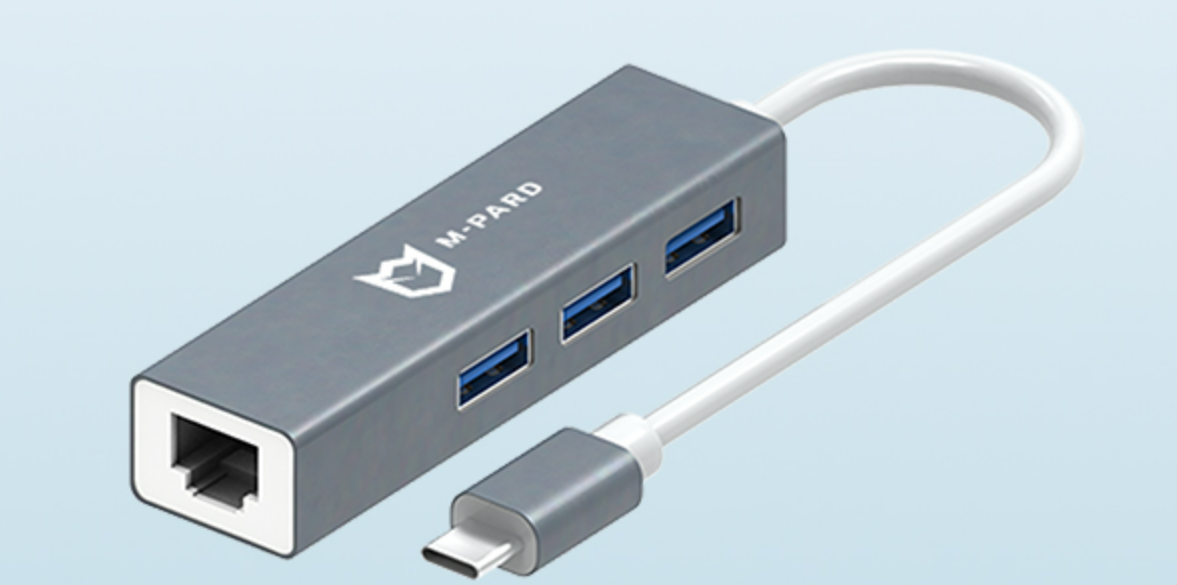
铭豹扩展坞 USB转网口 突然无法识别解决方法
当 USB 转网口扩展坞在一台笔记本上无法识别,但在其他电脑上正常工作时,问题通常出在笔记本自身或其与扩展坞的兼容性上。以下是系统化的定位思路和排查步骤,帮助你快速找到故障原因: 背景: 一个M-pard(铭豹)扩展坞的网卡突然无法识别了,扩展出来的三个USB接口正常。…...
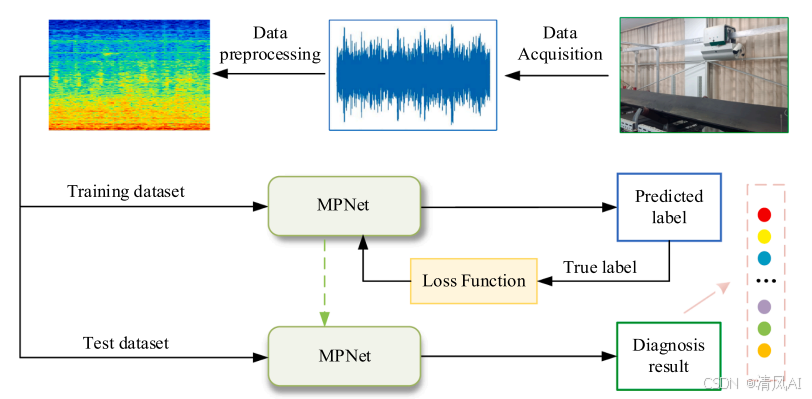
MPNet:旋转机械轻量化故障诊断模型详解python代码复现
目录 一、问题背景与挑战 二、MPNet核心架构 2.1 多分支特征融合模块(MBFM) 2.2 残差注意力金字塔模块(RAPM) 2.2.1 空间金字塔注意力(SPA) 2.2.2 金字塔残差块(PRBlock) 2.3 分类器设计 三、关键技术突破 3.1 多尺度特征融合 3.2 轻量化设计策略 3.3 抗噪声…...
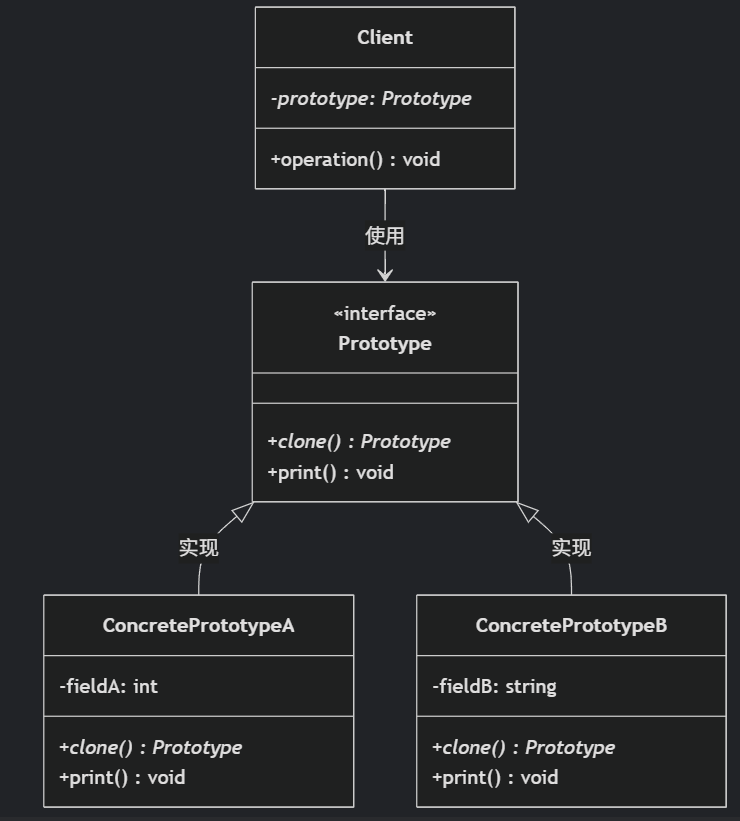
(二)原型模式
原型的功能是将一个已经存在的对象作为源目标,其余对象都是通过这个源目标创建。发挥复制的作用就是原型模式的核心思想。 一、源型模式的定义 原型模式是指第二次创建对象可以通过复制已经存在的原型对象来实现,忽略对象创建过程中的其它细节。 📌 核心特点: 避免重复初…...
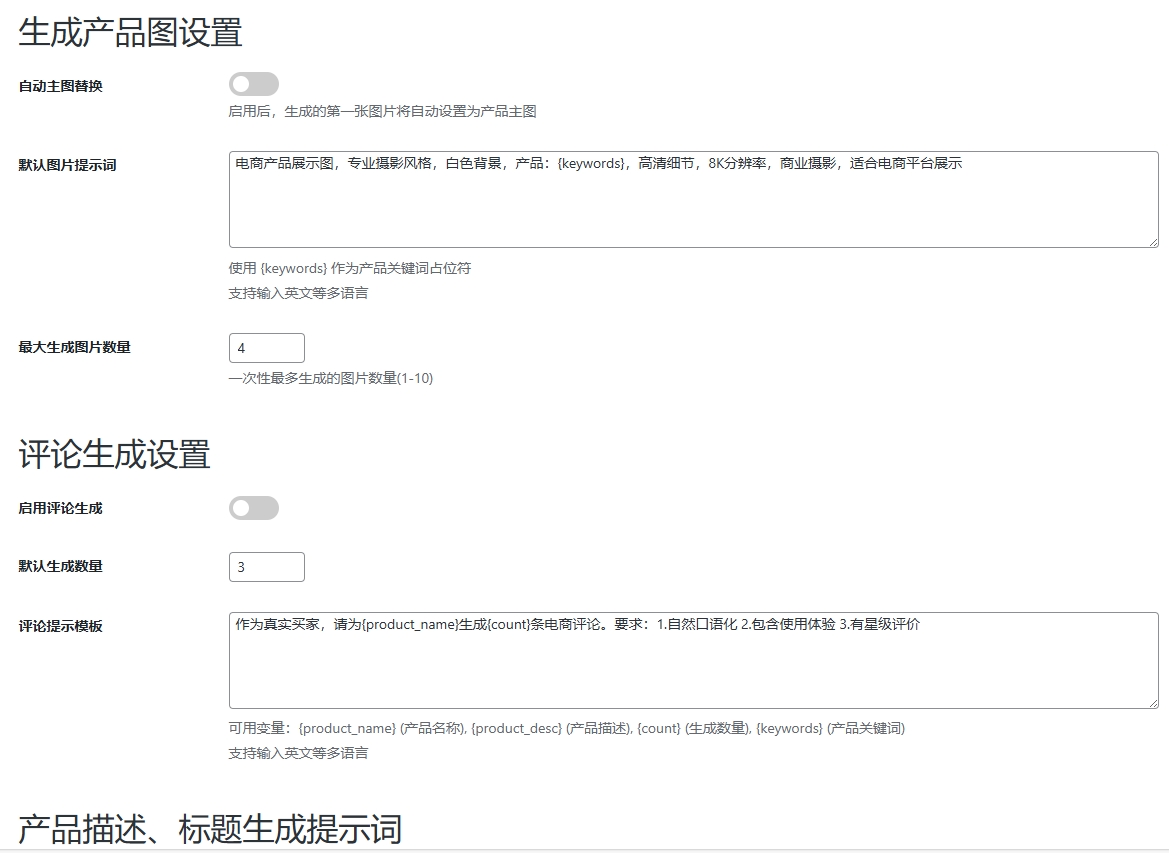
WordPress插件:AI多语言写作与智能配图、免费AI模型、SEO文章生成
厌倦手动写WordPress文章?AI自动生成,效率提升10倍! 支持多语言、自动配图、定时发布,让内容创作更轻松! AI内容生成 → 不想每天写文章?AI一键生成高质量内容!多语言支持 → 跨境电商必备&am…...
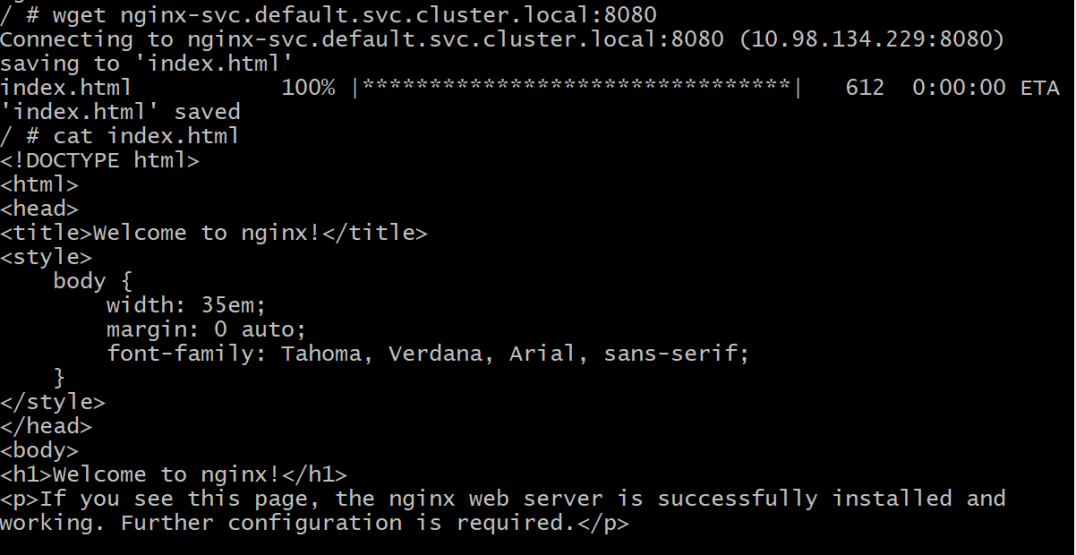
初探Service服务发现机制
1.Service简介 Service是将运行在一组Pod上的应用程序发布为网络服务的抽象方法。 主要功能:服务发现和负载均衡。 Service类型的包括ClusterIP类型、NodePort类型、LoadBalancer类型、ExternalName类型 2.Endpoints简介 Endpoints是一种Kubernetes资源…...

从 GreenPlum 到镜舟数据库:杭银消费金融湖仓一体转型实践
作者:吴岐诗,杭银消费金融大数据应用开发工程师 本文整理自杭银消费金融大数据应用开发工程师在StarRocks Summit Asia 2024的分享 引言:融合数据湖与数仓的创新之路 在数字金融时代,数据已成为金融机构的核心竞争力。杭银消费金…...

Vite中定义@软链接
在webpack中可以直接通过符号表示src路径,但是vite中默认不可以。 如何实现: vite中提供了resolve.alias:通过别名在指向一个具体的路径 在vite.config.js中 import { join } from pathexport default defineConfig({plugins: [vue()],//…...

Python实现简单音频数据压缩与解压算法
Python实现简单音频数据压缩与解压算法 引言 在音频数据处理中,压缩算法是降低存储成本和传输效率的关键技术。Python作为一门灵活且功能强大的编程语言,提供了丰富的库和工具来实现音频数据的压缩与解压。本文将通过一个简单的音频数据压缩与解压算法…...
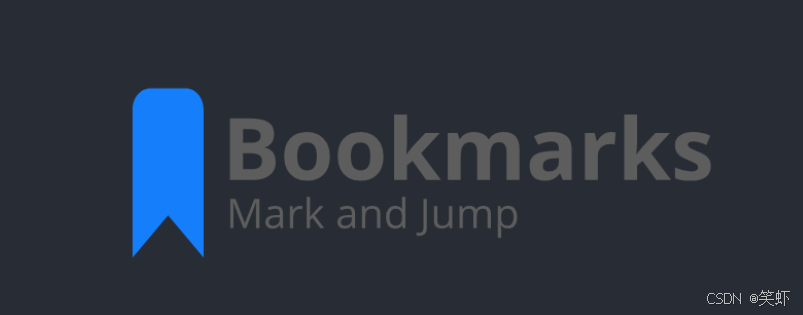
Visual Studio Code 扩展
Visual Studio Code 扩展 change-case 大小写转换EmmyLua for VSCode 调试插件Bookmarks 书签 change-case 大小写转换 https://marketplace.visualstudio.com/items?itemNamewmaurer.change-case 选中单词后,命令 changeCase.commands 可预览转换效果 EmmyLua…...

恶补电源:1.电桥
一、元器件的选择 搜索并选择电桥,再multisim中选择FWB,就有各种型号的电桥: 电桥是用来干嘛的呢? 它是一个由四个二极管搭成的“桥梁”形状的电路,用来把交流电(AC)变成直流电(DC)。…...


